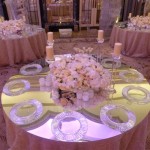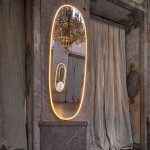```html
Illuminating Reflections: A Comprehensive Guide to Lights for Mirrors
Proper lighting is essential for effective use of mirrors in various settings, from personal grooming spaces to commercial establishments. The right mirror light not only enhances visibility but also contributes significantly to the overall aesthetic and functionality of a space. This article explores the various types, considerations, and best practices for selecting and installing lights for mirrors.
Understanding the Importance of Mirror Lighting
Inadequate lighting around mirrors can lead to inaccurate reflections, making tasks like applying makeup, shaving, or styling hair difficult. Shadows and uneven illumination can distort facial features and skin tones, resulting in flawed results. Moreover, poorly chosen lighting can strain the eyes, causing discomfort and potential long-term vision problems. Conversely, well-placed and thoughtfully selected mirror lights provide balanced, consistent illumination, ensuring accurate representations and a comfortable user experience.
Beyond functionality, mirror lighting also plays a crucial role in the ambiance of a room. The type of light, its color temperature, and its placement can dramatically alter the perceived atmosphere of a space. Warm, diffused light can create a relaxing and inviting environment, while cool, bright light can enhance focus and alertness. Therefore, selecting the appropriate mirror lighting requires careful consideration of both practical needs and aesthetic preferences.
Furthermore, energy efficiency is an increasingly important factor in lighting design. Choosing energy-efficient mirror lights, such as LED fixtures, can significantly reduce electricity consumption and lower energy bills. This not only benefits the environment but also provides long-term cost savings for homeowners and businesses alike.
Types of Lights Commonly Used for Mirrors
The market offers a diverse range of lighting options suitable for mirrors, each with its own advantages and disadvantages. Understanding the different types of lights and their characteristics is crucial for making an informed decision.
Vanity Lights: These are perhaps the most traditional type of mirror light, typically consisting of a horizontal bar with multiple light bulbs or LED lamps. Vanity lights are often mounted above the mirror, providing broad and even illumination. However, the placement above the mirror can sometimes cast shadows under the eyes and chin, which can be mitigated by supplementing with additional side lighting.
Sconces: Wall sconces are mounted on either side of the mirror, providing balanced and symmetrical lighting. This placement minimizes shadows and offers a more flattering and accurate reflection. Sconces are available in a variety of styles, from traditional to modern, making them a versatile option for various bathroom and dressing room aesthetics.
LED Strip Lights: LED strip lights are flexible and energy-efficient, making them a popular choice for illuminating mirrors. They can be easily mounted around the perimeter of the mirror, providing a soft and even glow. LED strip lights are also available in a range of color temperatures, allowing for customization of the lighting effect.
Backlit Mirrors: Backlit mirrors, also known as illuminated mirrors or LED mirrors, feature integrated LED lighting behind the mirror surface. This creates a diffused and ambient glow, adding a touch of sophistication to any space. Backlit mirrors are particularly well-suited for modern bathrooms and dressing rooms.
Pendant Lights: While less common than other options, pendant lights can be used to add a decorative touch to mirror lighting. When hung strategically on either side of the mirror, they can provide both ambient and task lighting. However, careful consideration must be given to the height and placement of pendant lights to avoid obstructing the view of the mirror.
Factors to Consider When Selecting Mirror Lights
Choosing the right lights for mirrors involves considering several key factors, including the size and shape of the mirror, the desired level of illumination, the color temperature of the light, and the overall style of the room.
Size and Placement: The size of the mirror and the available space around it will significantly influence the type and placement of lights. For larger mirrors, multiple light sources may be necessary to ensure adequate and even illumination. The placement of lights should be carefully considered to minimize shadows and create a flattering reflection. Side lighting is generally preferred over overhead lighting, as it provides more balanced illumination.
Color Temperature: Color temperature, measured in Kelvin (K), refers to the warmth or coolness of the light. Warm light (2700-3000K) has a yellow hue and is often used to create a relaxing and inviting atmosphere. Cool light (4000-5000K) has a blue hue and is often used to enhance focus and alertness. For makeup application and grooming, a neutral white light (3500-4000K) is generally recommended, as it provides the most accurate representation of skin tones and colors.
Brightness: The brightness of the light, measured in lumens, determines the intensity of the illumination. The appropriate brightness level will depend on the size of the mirror and the desired level of task lighting. Insufficient brightness can strain the eyes, while excessive brightness can cause glare and discomfort. Experimentation or professional consultation may be required to determine the optimal brightness for a specific setup.
Energy Efficiency: Choosing energy-efficient lighting options, such as LED lamps, can significantly reduce energy consumption and lower utility bills. LED lights also have a longer lifespan compared to traditional incandescent or halogen bulbs, reducing the need for frequent replacements. Look for lights with a high energy efficiency rating to maximize savings.
Style and Aesthetics: The style of the mirror lights should complement the overall design of the room. A wide variety of styles are available, from traditional to modern, allowing for customization to match any décor. Consider the finish, shape, and materials of the lights to ensure a cohesive and visually appealing look.
Dimmability: Having dimmable mirror lights provides flexibility and allows for adjusting the brightness level to suit different tasks and moods. Dimmable lights can be particularly useful in bathrooms, where softer lighting may be desired for relaxation and brighter lighting may be needed for grooming.
Installation and Safety Considerations
Proper installation is crucial for ensuring the safety and functionality of mirror lights. It is generally recommended to consult with a qualified electrician for installation, especially when dealing with electrical wiring and moisture-prone environments like bathrooms.
Electrical Safety: Always disconnect the power supply before installing or replacing any electrical fixtures. Ensure that the wiring is properly grounded and that all connections are secure. Use appropriate electrical boxes and connectors to protect wiring from moisture and damage. Follow all local electrical codes and regulations.
Placement and Mounting: Carefully plan the placement of the lights before installation. Ensure that the lights are mounted securely and that they are positioned to provide optimal illumination without casting shadows or glare. Use appropriate mounting hardware for the type of wall or surface being used.
Moisture Resistance: In bathrooms and other moisture-prone environments, it is essential to choose lights that are rated for wet or damp locations. These lights are designed to withstand moisture and prevent electrical hazards. Look for lights with a high IP (Ingress Protection) rating to ensure adequate moisture resistance.
Maintenance: Regularly clean the mirror lights to remove dust and dirt, which can reduce their brightness and efficiency. Replace bulbs or lamps as needed, following the manufacturer's instructions. Inspect wiring and connections periodically to ensure there are no signs of damage or wear and tear.
By carefully considering the various types, factors, and considerations outlined in this article, individuals can select and install lights for mirrors that meet their specific needs and enhance the functionality and aesthetics of their spaces. Proper mirror lighting is an investment that improves not only visibility but also the overall experience of using a mirror.
```
Mirror Lights Cole Lighting

18w Modern Electroplated Brass Gold Led Wall Light Mirror Vanity Picture Lamp Warm White Ashish Electrical

Homlux 32 In W X H Round Frameless Led Light With 3 Color And Anti Fog Wall Mounted Bathroom Vanity Mirror 96fb004795 The Home Depot

How To Diy Vanity Mirror With Led Strip Lights

Yansun 5 91 Ft 10 Light Vanity Lights For Mirror White Indoor Led String Usb Hollywood Style H Wl086 The Home Depot

Auslese Makeup Mirror Dimmable Usb Led Bulb Set Of 10 Bulbs Lights For Vanity With 3 Colour Modes Adjustable Brightness Easy Installation In Buy

10 Bulb Led Vanity Mirror Lights Baig Home Décor

Buy Led Bathroom Vanity Picture Mirror Light Black Gold Wall Lamps N Lighten

Round Led Light Mirror Home 12 W

Integrity Led Lighted Mirror Electric Lighting Company








